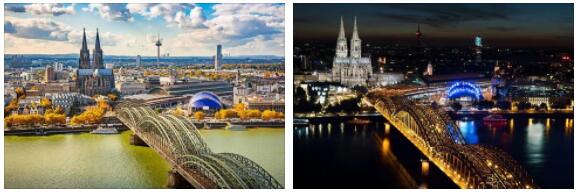Kiel (Germany)
Kiel was founded in 1242 by Count Adolf IV. Standing on the shores of the Baltic Sea and protected from storms, it has become quite a significant trading port. In 1284, Kiel joined the union of German cities, later called the Hansa. Here was the Prussian, and later – the all-German fleet. The transformation of the city into a German naval base changed its once quiet life into a large and lively city. Kiel hosts the Keeler Vohe maritime festival every summer, the largest regatta in the world and its accompanying cultural events. About 1,500 yachts and 4,000 yachtsmen take part in the competition every year. Guests from all over the world turn Kiel Week into an international arena.
Perhaps the most impressive thing in Kiel is the coast – everywhere yacht parking, locks, shipyards, fishing trawlers, and behind them – the open sea, where you can ride a steamboat, yacht or motor boat. On the coast of the Kiel Bay there is an operating shipyard – Hovaldtswerke.
A significant part of the city was bombed during the Second World War, but was rebuilt by residents. The cultural center of Kiel is located in the complex of the restored Kiel Palace in the old part of the city. There is a concert hall, exhibition halls, a collection of exhibits on the history of the land, an art gallery and the library of Schleswig-Holstein. A few steps away you can find the city museum Warleberger Hof and the Kunsthalle art gallery. On the Oslokay embankment there is a maritime museum and a museum port, where you can see the Busard ship, which used to set buoys and the Hindenbug rescue ship.
The surroundings of Kiel are interesting for visiting. In the town of Laboe, 20 km from the city center, there is a well-known in Germany a memorial in honor of the sailors who died in the First and Second World War, 72 meters high. There is an observation deck on the memorial, and in front of the memorial there is a real submarine. In the town of Molfsee, 6 km south of Kiel, there is a wonderful open-air museum, which contains wooden buildings from all over the federal state of Schleswig-Holstein. Here you can get an idea of how people used to live in the country between the North and Baltic Seas.
Cologne (Germany)
According to Proexchangerates, Cologne is the oldest of the German cities. It was founded by Roman legionaries over 2,000 years ago and elevated to the rank of a city by Agrippina, the wife of the Roman emperor Claudius. The heyday of Cologne falls on the 12th – 15th centuries, when it became one of the richest cities with the largest population. In the Middle Ages, the city began to play an important role as a center for fairs. In 785-1273 it was the center of an archbishopric. After the discovery of the New World, the emergence of new trade routes and the formation of nation-states in Europe, Cologne began to lose its economic influence. Its political role also declined: in 1794 Cologne was captured by the French revolutionaries, in 1815 became part of the Prussian kingdom. But after the industrial revolution, a new era of growth began, which continues to this day. The current population of Cologne is about 1 million people. Today Cologne is a center of art, a fair center of world importance, a major transport hub and an economic center of Western Europe. Here, modern buildings are successfully combined with architectural monuments, creating a unique flavor.
The most prominent landmark of the city is the Cologne Cathedral. It is the most visited in Germany. The construction of the cathedral began in 1248, when the Archbishop of Cologne Konrad von Hochstaden laid the first stone in its foundation, and ended only in 1880 under the Prussian king Friedrich Wilhelm IV. Cologne Cathedral is the highest in Germany, its towers are 157 m high. A large number of works of art are stored here – rows of benches in the choir, frescoes, St. Engelbert’s shrine, episcopal batons, statues of saints, as well as the Three Kings’ shrine. Cancer of the Three Kings is one of the most precious shrines of Christianity. It is a sarcophagus made of silver, gold and precious stones, in which the remains of the Holy Magi are kept.
In Cologne preserved monuments of the era of Roman rule – the Governor’s Palace, numerous towers and gates. In the center of the city there are 12 Romanesque churches of the 5th – 13th centuries. Of the museums, you should visit the Roman-Germanic Museum dedicated to the history of the city, the Museum of Romanesque Ceramics, the Museum of Chocolate.
The city is nice even just to walk. The shopping streets of Hohe Strasse, Schildergasse and Ehrenstrasse are always full of people. There are many cozy restaurants and pubs, as well as pubs for every taste.
In February, during the carnival, Cologne becomes a place of pilgrimage for millions of tourists from all over the world. At this time, the atmosphere of fun and general celebration reigns in the city. Carnival opens with the “Three Crazy Days” leading up to the famous Pink Monday, when the holiday reaches its highest point.
